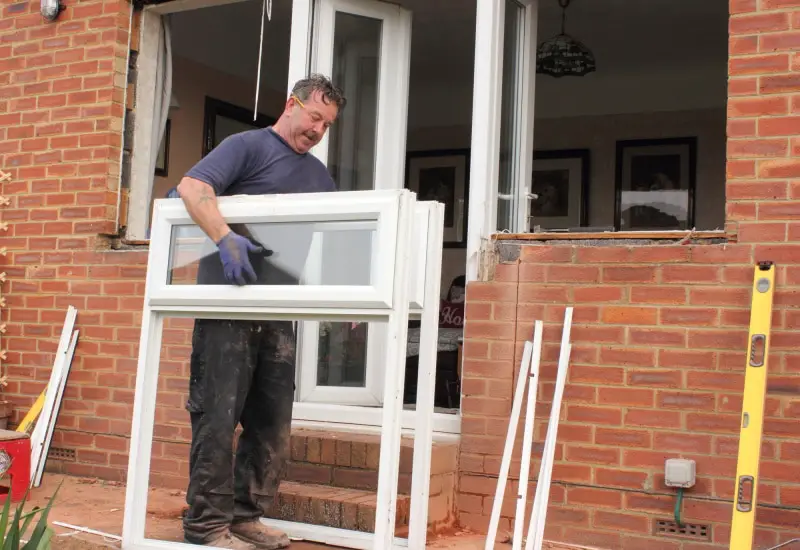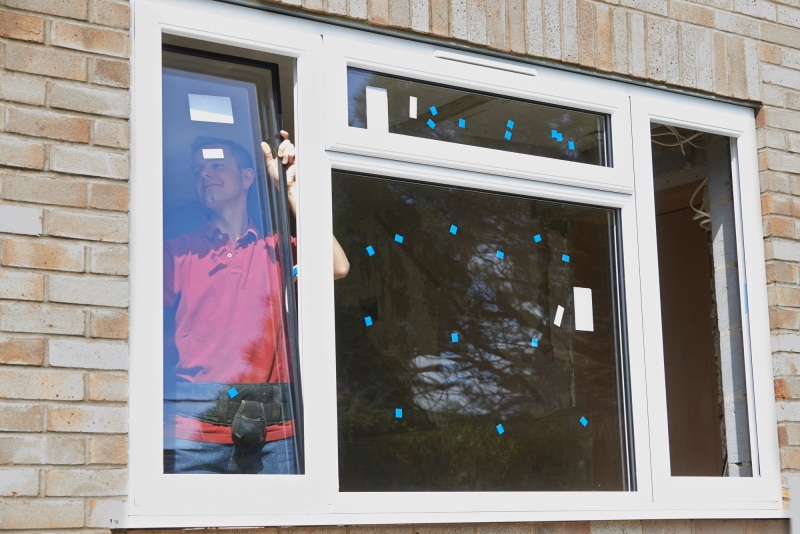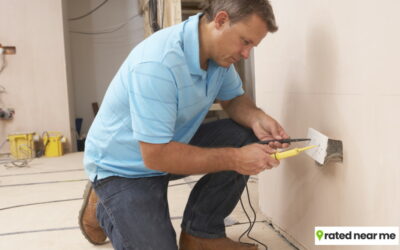It’s the most popular type of window in the UK – but how much does installing double glazing cost? And is it worth installing double glazing?
We explore the costs, consumer benefits and key considerations for anyone thinking about investing in double glazed windows.
Double glazed windows are the go-to window type for UK homes – and with good reason. The insulating properties of double glazing can help keep your home warm, reduce energy costs and keep the noise from outside your home… outside your home!
It typically costs from £250 up to £600 per window to install double glazing, and up to £140 for common double glazing repairs. However the figure you can expect to pay is determined by a number of different factors.
In this guide, we’ll explore what variables influence double glazed window prices – and show you how to make an approximate calculation of double glazing costs for your own home.
What is double glazing?
A double glazed window is one that has two panes (or layers) of glass which have an “air gap” in between them.
The two panes of glass and the air gap sit within a frame – usually made from uPVC (Unplasticised Polyvinyl Chloride) – and together these elements make up the double glazed unit.
Why is double glazing so expensive?
A staggering 18% of heat is lost from a home via its windows. The primary benefit of double glazing is that it’s an excellent thermal insulator – it keeps the warm air inside your home in, and the cold air outside your home out.
This valuable property is why so many people are happy to invest in double glazed windows.
How does double glazing work?
It’s all thanks to the “air gap” between the two panes.
With single glazed windows, when cold outside air hits the window pane, that cold temperature is quickly transferred to the other side of the window pane (the one inside your home).
Warmer air from the inside of your home is also transferred to the outside. The effect is that your home loses heat through a single glazed window relatively quickly.
With double glazed windows, the outer window pane transfers cold air from the outside to the air gap. This “air gap” is typically filled with a gas such as Argon gas, rather than air or oxygen.
The argon gas significantly reduces the transfer rate of cold air to the inner window pane. It also reduces the transfer of warm air to the outer window pane.
For a typical home, this can result in as much as a 50% reduction in heat loss, making that home significantly more energy efficient.
What are the benefits of double glazing?
In addition to impressive insulation performance, there are a number of other benefits of installing double glazed glass.
Reduced Energy Bills – This is a key benefit of double glazing, which is directly linked to its energy efficiency. With less heat being lost from a home, less heat needs to be generated by heaters and radiators inside, which means lower gas and electricity bills for the homeowner.
Noise Insulation – Just as double glazed windows slow down the transfer of heat from outside to inside, they also reduce the transfer of noise. For this reason, double glazed windows are an attractive proposition for UK homeowners who live on a main road or in a busy residential area.
Reduced Condensation – Condensation takes the form of small water droplets which build up on your window – and it occurs when moisture in your house condenses on the cold surface of the window pane. Over time, condensation can lead to the build-up of mould and mildew on the window frames or within the home.
With a double glazed window, the interior window pane is much less cold because it is shielded by the exterior pane and the air gap.
Increased Security – While no window is fully burglar-proof, tightly-sealed double glazed windows represent a significant improvement on single glazed windows when it comes to home security.
Double Glazing Cost For A Single Window
There are a number of factors that affect window replacement cost for double glazing – including glass type, frame material and size of the windows. This means it can be very difficult to provide “average” estimates of double glazing costs.

The most affordable material for the frame of a double glazed unit is white uPVC. The following figures are representative costs for installing single uPVC windows – and are therefore at the low end of what you can expect to pay.
Double Glazed Casement Window – from £250
A casement window is the most common type of window used on UK homes. Standard versions incorporate 2-3 window panes, at least one of which can be opened via a vertical hinge.
Double Glazed Sash Windows – from £500
Sash windows are commonly found on older properties. They consist of two framed panels. You can slide the top panel down over the bottom panel, and vice versa.
Double Glazed Tilt & Turn Window – from £400
Tilt & Turn windows are often found in hotels and apartments – but can be used on any type of residential property. They have three different settings: closed; open at a tilt (via a horizontal hinge at the bottom); and open wide (via a vertical hinge along the side).
Double Glazed Bay Window – from £1200
A bay “window” actually consists of three separate windows. These larger windows usually protrude from the front of the property are arranged in a flat arc shape.
Double Glazed Windows Cost For A Home
How can you estimate the cost of installing or replacing double glazing for a whole house?
In order to calculate the cost for your own home, it’s best to think about the number of windows that you have, rather than the size of your home or the number of bedrooms.
Here are some examples which may help.
It’s common for a three bedroom home in the UK to have:
- 3 x uPVC casement windows at the front
- 4 x uPVC casement windows at the back
So the cost of cost of double glazing a 3-bed house with this window arrangement would be upwards of £1,750 (7x uPVC casement windows at a cost of £250)
Alternatively, the house might have:
- 2 x uPVC casement windows and 1 x uPVC bay window at the front
- 4 x uPVC casement windows at the back
So the cost of cost of double glazing a 3-bed house with this window arrangement would be upwards of £2,700 (6 x uPVC casement windows at a cost of £250 + 1 x uPVC bay window at a cost of £1,200)
Important: As noted above for single window costs, these costs are at the lower end of what you can expect to pay.
Double Glazing Buying Guide
There are more options than you might think when it comes to choosing your double glazing – and each factor influences the overall price you’ll pay.
Costs for double glazing can quickly increase once certain material, glass and colour selections have been made.
Frame Material & Frame Colour
White uPVC is the most common window frame type in the UK – when you picture a standard window in your head, it’s likely you’re picturing a white uPVC window!
uPVC is the most economical and low-maintenance option for your window frame. However, you should expect to pay more if you’re looking for a different frame colour. Popular alternatives to white include grey, brown, black and various “wood grain” effect finishes.
Aluminium frames are more expensive and slightly less insulating than uPVC. However the sleek, contemporary appearance of aluminium frames make them a popular choice for modern builds. Traditional wooden frames or timber frames are common in older properties and provide a pleasing classic aesthetic. However they tend to be high maintenance and significantly more expensive than uPVC.
Double Glazing, Triple Glazing & Secondary Glazing
Double Glazing consists of two window panes separated by a layer of air or gas. Triple Glazing adds a third pane and a second layer of air. These additional layers have the effect of increasing the most desirable elements of double glazing – including better thermal insulation and increased noise reduction.
Unsurprisingly, triple glazed windows cost more than double glazed windows. However you can expect to offset some of the additional installation cost via cheaper energy bills.
A third, more affordable option is Secondary Glazing. Secondary glazing is the addition of a slim, second glass pane to the inside of your existing windows. This secondary pane sits within its own frame and can be opened and closed independently of the original window. Secondary glazing cost is lower than that of double glazing. It is also a popular option for listed buildings, where homeowners are not permitted to change the outside of the property.
Double Glazing Energy Ratings
The British Fenestration Rating Council (BFRC) has developed a widely adopted energy rating system for double glazed windows. The ratings range from A++ (the best rated) through to E (the worst rated) – although building regulations require that all newly installed windows are at least C rated.
Double glazing energy labels are similar in appearance to the EU Energy Label found on new household appliances. Highly rated double glazing will typically cost more than lower rated alternatives. However, just like triple glazing, you can expect to save more on your energy bills by installing highly rated glass.
Tint, Noise Reduction & Glass Strength
Finally, some glass types have extra properties that you may find appealing when choosing for your own home. Tinted double glazing prevents excessive sunlight from entering through the window. This helps to protect interiors from sunlight damage and regulate the temperature inside your home.
Noise-proof double glazing comes with greater noise reduction capabilities, while Extra-strength double glazing is even tougher to break, for those who are concerned about window security.
Double Glazing Repairs
Over 85% of UK homes already have double glazing installed. High quality double glazing should last for at least 20 years – but daily wear-and-tear, inclement weather and accidental or malicious actions from people can all lead to damage.

In many cases, double glazing can be repaired, which saves homeowners having to pay for replacement double glazing. Here are some common examples of double glazing repair jobs and their costs:
“Blown” Window – A blown window is when window glass mists up due to moisture getting between the two glass panes. It’s often caused by a damaged seal or damage to the glass itself. This more expensive repair job should be undertaken by a professional double glazing installer – but it is cheaper than replacing the whole window (Repair Cost: £50-£150).
Window Seal Replacement – The seals around double glazed units are an essential part of the heat retaining benefits of double glazing. Over time, they can become damaged or cracked – causing small draughts, condensation and mould. Window seal replacement is straightforward and inexpensive. You can do it yourself, or hire a builder or handyman (Repair Cost: £10 for parts, £50-70 for labour).
Window Hinge Repair – If your window is stiff or difficult to open, it’s likely that the hinge has become damaged or worn. This relatively simple job should still be undertaken by a professional double glazing installer (Repair Cost: £50-80).
Double Glazing Installation
We have seen that there are a number of decisions for homeowners to make when it comes to double glazing installation.
The choices and the costs involved can be overwhelming – which is why many people choose to speak to local double glazing installers to get advice, quotes and bespoke guidance.
Here are some key considerations to have in mind when choosing a supplier:
1. Get Multiple Quotes – To get the best price for your double glazing, it’s essential that you get quotes from multiple suppliers. You can use tools such as Rated Near Me to get fast, accurate quotes from double glazing installers near you.
2. Previous Work – Ask to see examples of previous jobs that the double glazing installer has worked on. This will give you an idea of the scale of the jobs they have taken on, and the type of windows they have experience installing.
Note that images on trader websites may well be stock images, as opposed to jobs they have actually undertaken.
3. Customer Ratings & Reviews – For an experienced local tradesmen, it should be relatively easy to find customer ratings and reviews. Directory websites are likely to have reviews or a star rating for each tradesperson, but you could also check social media pages or Google for reviews.
4. Contracts, Insurance & Payments – Make sure that your double glazing contract contains details such as the payment schedule, materials and labour costs, and the schedule of work.
You should be satisfied that you know what will happen if the work is delayed, unsatisfactory or is affected by bad weather.
Finally, check that the supplier has appropriate insurance in the event of damage to your property.
The Cost Of Double Glazing – It Is A Worthwhile Investment
There’s no doubt that investing in double glazing for your home can come at a significant cost. However, few other home improvements deliver the same long-term value for money when compared with double glazing.
The transformative effect of double glazing on your home’s energy efficiency means that benefits such as noise-cancelling and improved security can be seen as welcome extras.
This guide has given you a brief overview of the cost of double glazing – as well as the options available to you when it comes to window types, materials and installation.
However, we highly recommend contacting local double glazing companies to get tailored advice, guidance and quotes.
You can use Rated Near Me to request competitive quotes from local double glazing companies – in just a few clicks!




